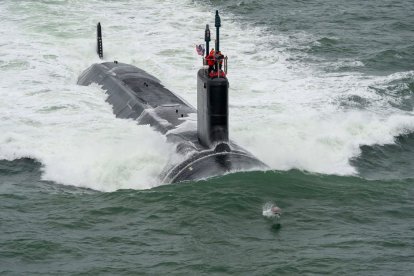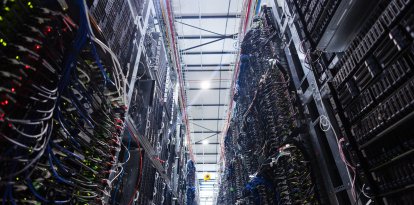U.S. builds new model of nuclear submarine for combat and espionage missions
It is a new edition of the Virginia class and will cost $5.1 billion, close to a billion more than other submarines in the same class.

Submarino clase Virginia (Cordon Press)
On the banks of the Thames River in the town of Groton, Conn., the Electric Boat yard is working on the future of military submarines: a new edition of the Virginia class of nuclear-powered subs.
As reported by Naval News, little is known about the details of the unprecedented submarine, as expected. It is, however, expected to be able to carry specialist uncrewed underwater vehicles (UUVs), remote operated vehicles (ROVs) and special operations subs. The modified submarine would also feature extra space in the center of the hull to carry more weaponry, according to USNI News.
The Virginia class, identified by the acronym SSN 774, is "the first U.S. Navy warship designed from the keel up for the full range of mission requirements in the post-Cold War era," according to the manufacturer’s web page.
In addition, the website includes technical specifications of the class that help to imagine what the new submarine could look like. The subs in this class measure 377 feet in length and 34 feet in diameter, including the hull. They can reach 25 knots of speed and dive 800 feet. Their arsenal includes torpedoes, land-attack missiles and anti-submarine mines, among others.

SSN 774 Virgina Class Submarine
The price of dominating the ocean
The submarine will cost $5.1 billion, according to a congressional report. The United States has already advanced more than $2 billion for the construction. The total amount will be used to finish two vessels currently under construction.
This price tag is $1 billion higher than the previous model of the Virginia class, according to Naval News.
But... why a submarine?
In war and in peace, nuclear submarines have diverse roles ranging from espionage to attacks on other submersibles.
During the Cold War, the main strategic role assigned to these vessels was combat against other Soviet submarines. Since the fall of the Soviet Union, they have increased both their role in espionage operations and their ability to attack ground targets in the event of conflict.
Today, however, the original purpose has regained importance: "With the shift in recent years from the post-Cold War era to a situation of renewed great power competition, ASW [anti-submarine warfare] against Russian and Chinese submarines has once again become a more prominent mission for U.S. Navy SSNs [nuclear-powered attack submarines].”
Beyond this recovered function, the presence of submarines in the ocean is necessary to constantly protect strategic positions, such as the submarine cables that enable telecommunications or the minerals on the seabed. Magnesium, gold, and rare earth elements are found miles from the ocean’s surface, and could be accessible with deepwater mining technologies still under development, according to the Government Accountability Office.
RECOMMENDATION





















